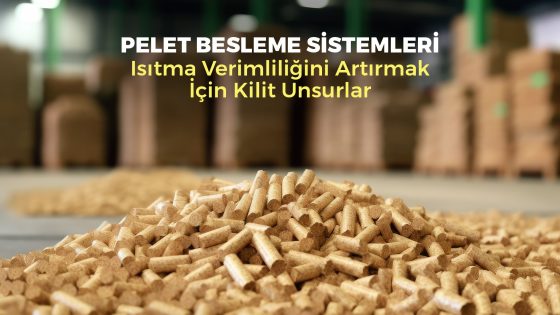
Pellet Feeding Systems:
Key Elements to Increase Heating Efficiency
Pellet fuel has become an important option in terms of energy efficiency and environmental sensitivity. One of the fundamental elements behind this option is pellet feeding systems. Let’s take a closer look at the operating principles, types, and advantages of pellet feeding systems.
Various Pellet Feeding Systems
Pellet feeding systems can be divided into three main categories based on design and operation: bottom-fed, horizontal-fed, and top-fed systems.
1. Bottom-Fed Systems: In these systems, pellet fuels are fed into the combustion chamber from below. Depending on the design, a horizontal or upward flame is generated. Bottom-fed systems continuously supply pellets to the combustion chamber, thereby increasing energy efficiency.
2. Horizontal-Fed Systems: Similarly, in horizontal-fed systems, pellets enter the combustion chamber from below. This design is suitable for larger combustion chambers and has a greater heat production capacity.
3. Top-Fed Systems: In top-fed systems, pellets fall onto the grate from a storage tank via augers. This method provides more precise feeding and can be adjusted according to power needs. These types of feeding systems are commonly used in stoves and boilers. The advantage of top-fed burners is that the pellet storage is separate from the combustion chamber, reducing the risk of backburn.
Advantages and Disadvantages of Pellet Feeding Systems
Top-fed systems reduce the risk of backburn due to the separation of the pellet storage from the combustion chamber. However, pellets falling from above can lead to dust accumulation and irregular combustion. Nonetheless, these systems are ideal for power adjustments and precise feeding needs.
Bottom-fed and horizontal-fed systems are generally suitable for larger combustion chambers and can produce more heat. However, the continuous feeding of pellets into the combustion chamber can increase the risk of backburn while enhancing energy efficiency.
In conclusion, pellet feeding systems aim to ensure the efficient combustion of pellet fuels and increase the efficiency of heating systems. When determining which type is most suitable for your needs, both advantages and disadvantages should be considered. Pellet-fueled heating systems can be an attractive option for anyone seeking energy savings and environmental sustainability.
